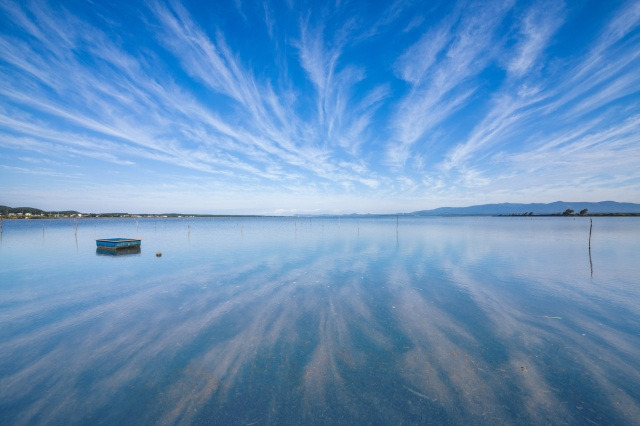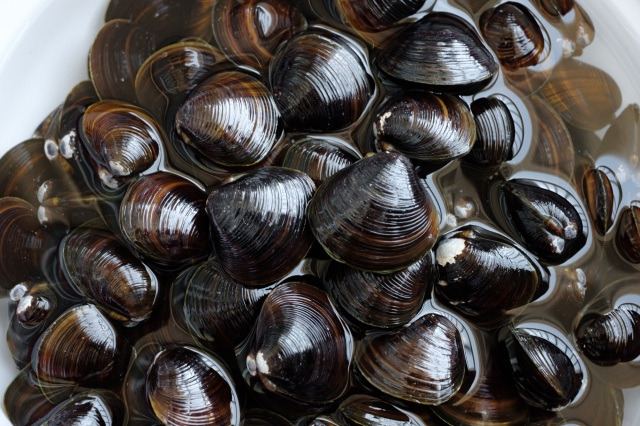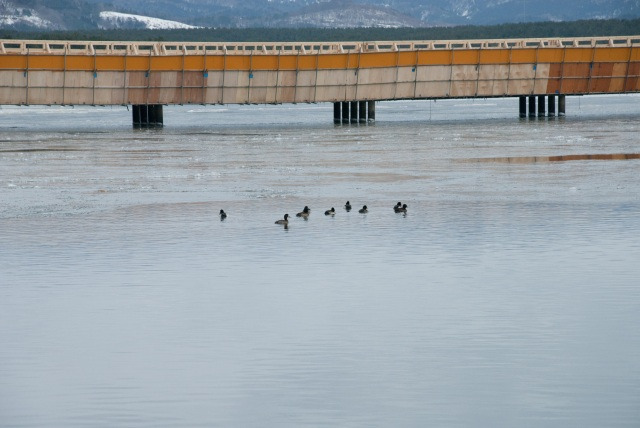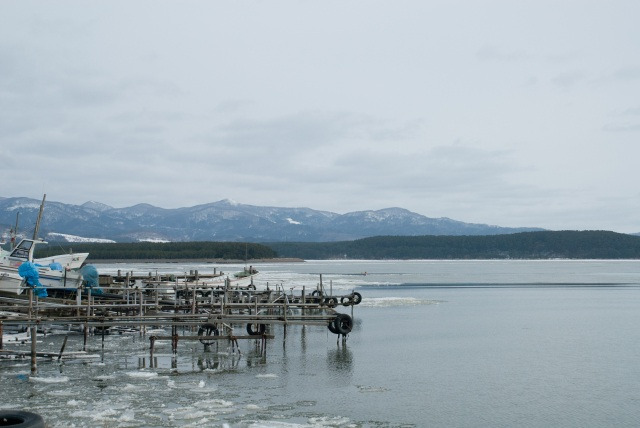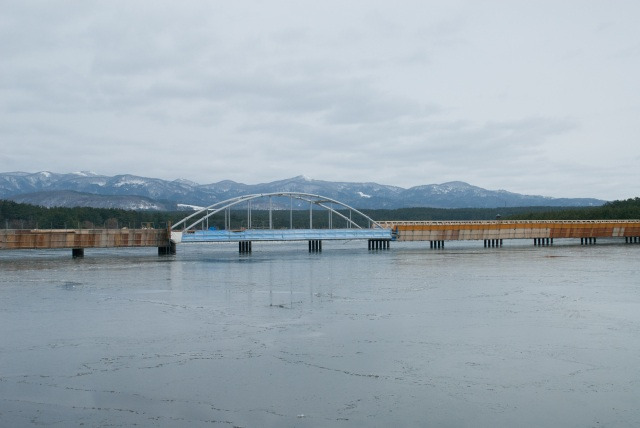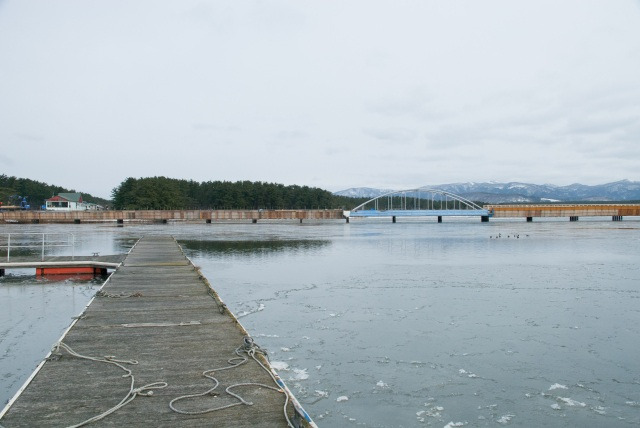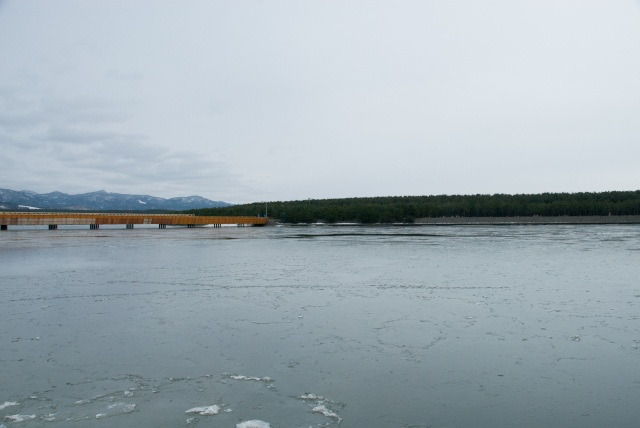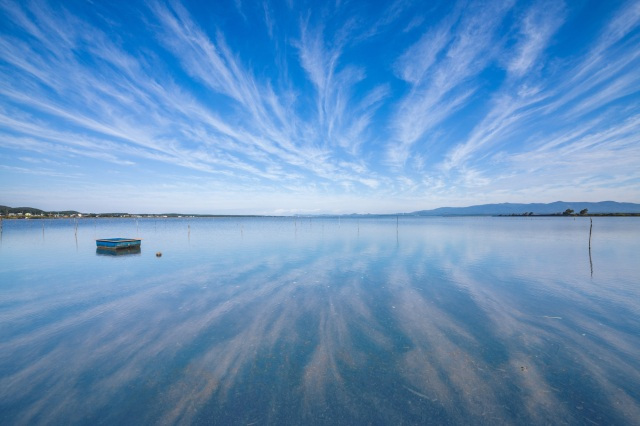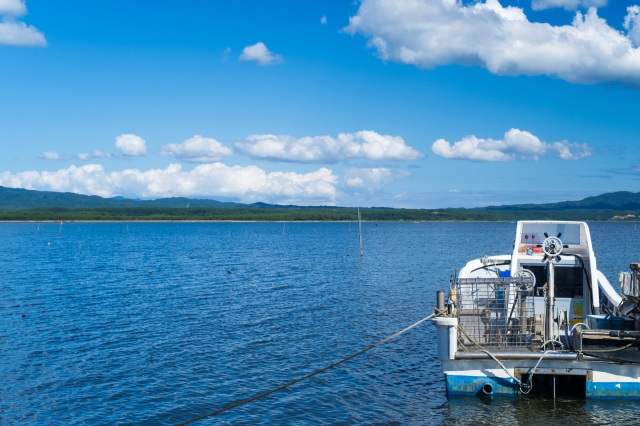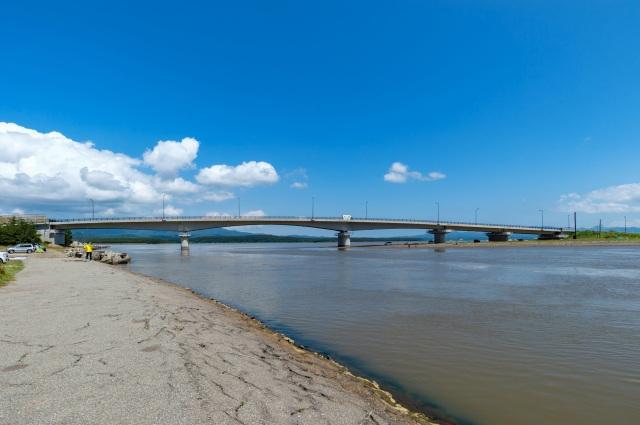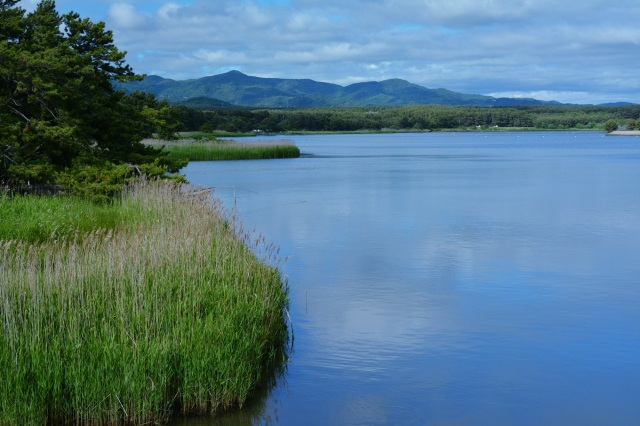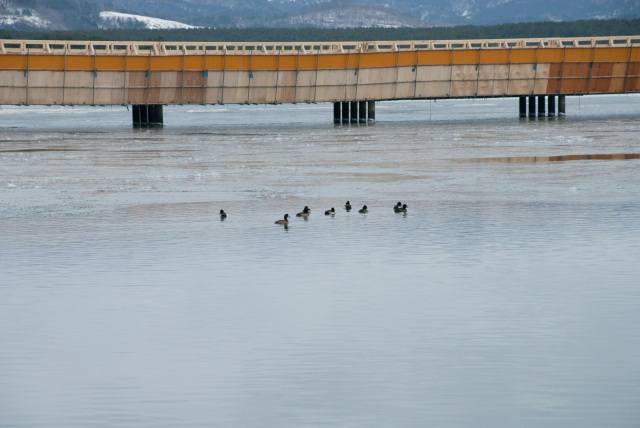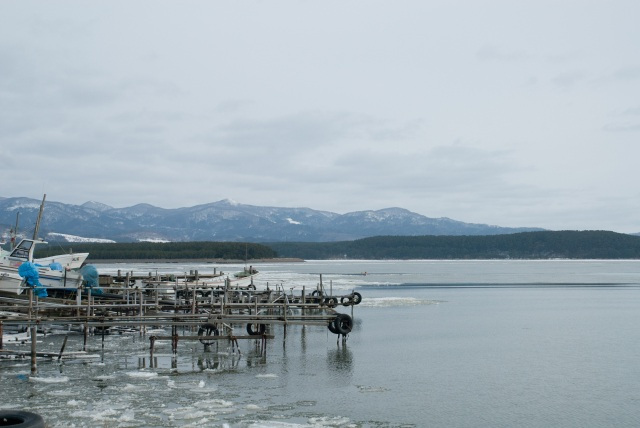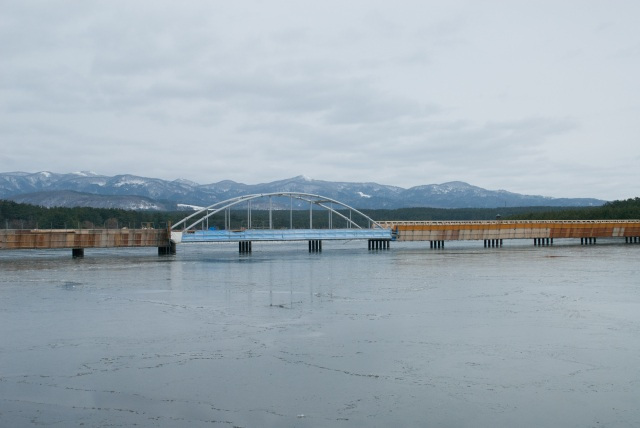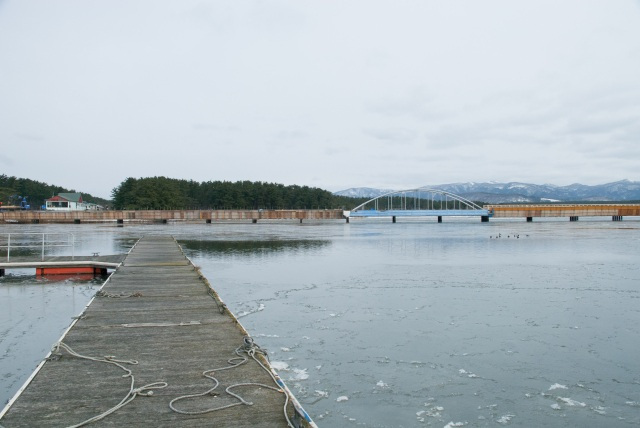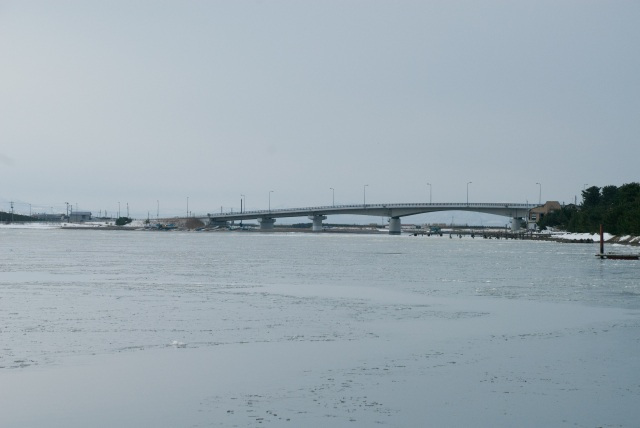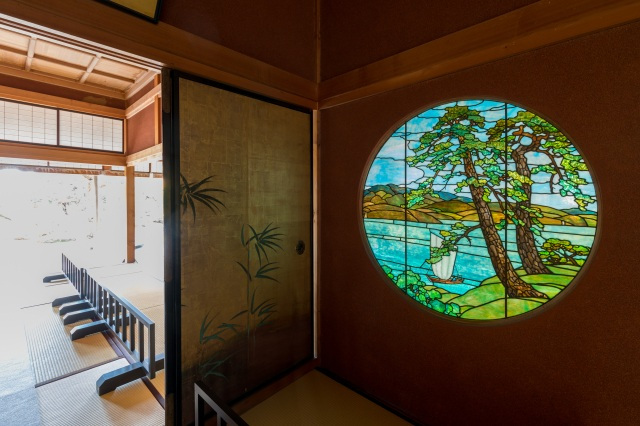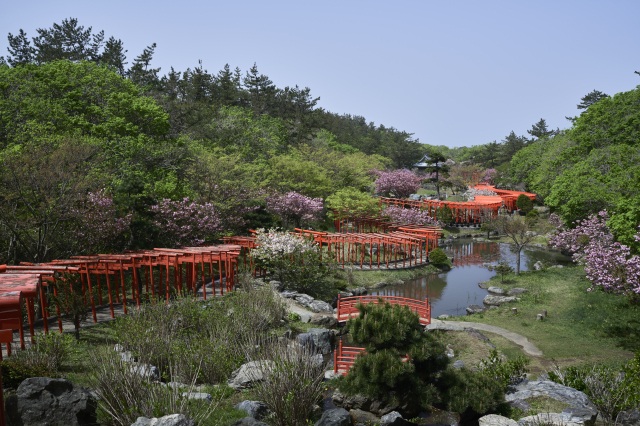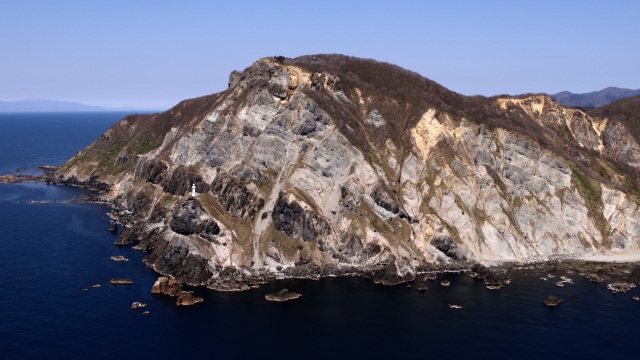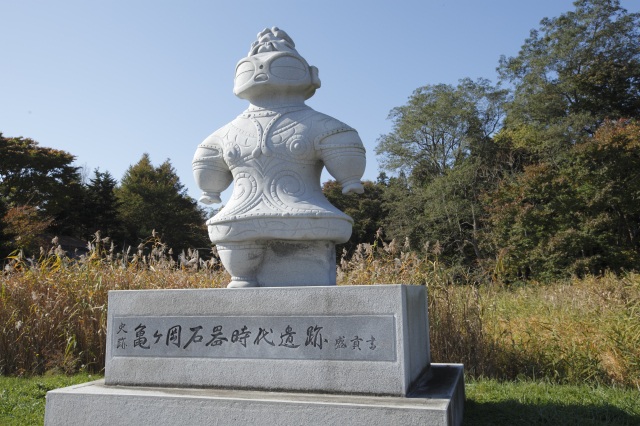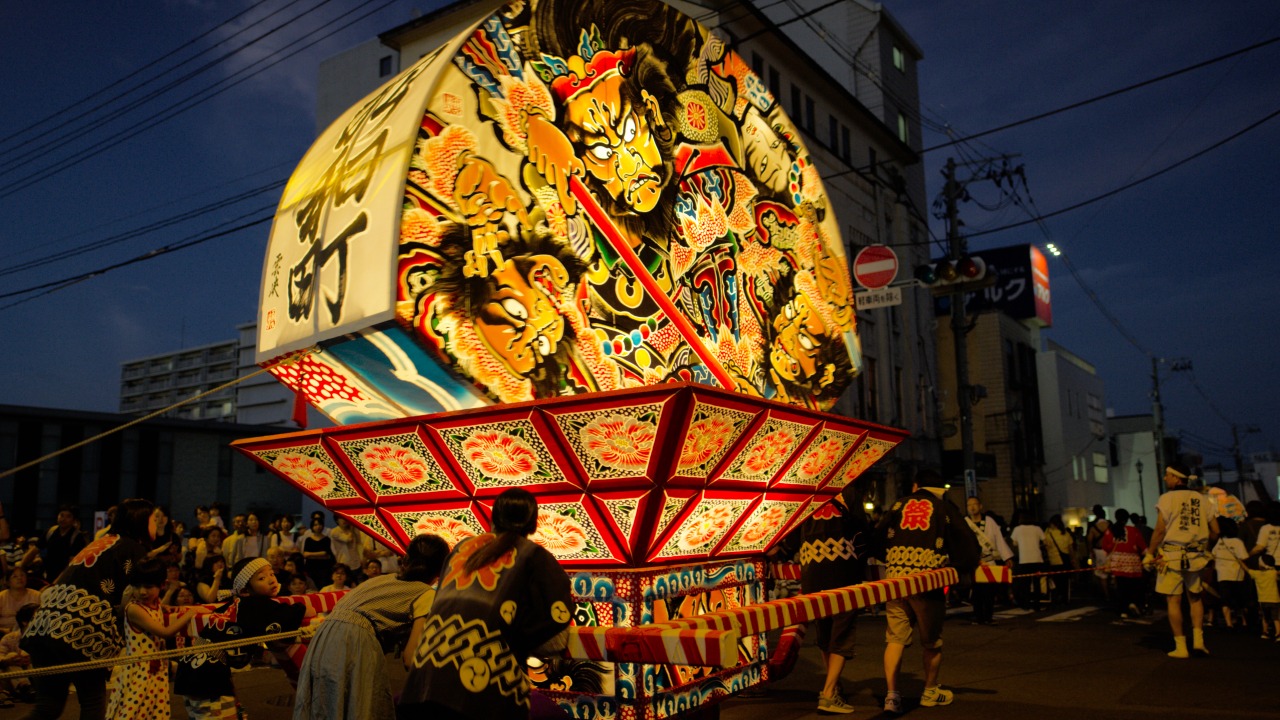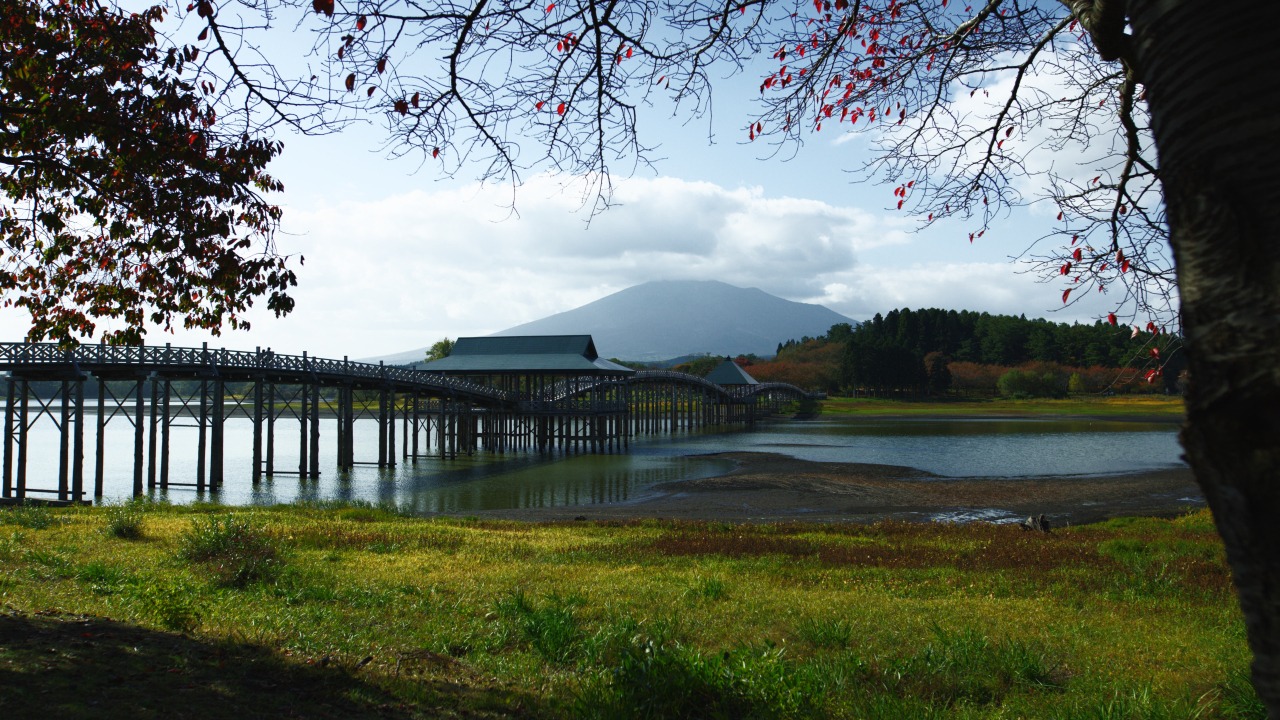Lake Jusanko
A brackish-water lake mixing seawater and freshwater, famous for Japanese basket clams
Lake Jusanko is seven kilometers from north to south, five kilometers from east to west, and 31.4 kilometers around its shoreline, making it the third largest lake in Aomori Prefecture. Jusanko literally translates to “Lake Thirteen” in Japanese, and the lake is said to be named for the fact that thirteen rivers flow into it, the main one being the Iwaki River. Located along the Sea of Japan coast in the northwestern part of the Tsugaru Peninsula, Lake Jusanko is a brackish-water lake mixing seawater and freshwater. Its rich natural environment is home to Japanese basket clams, a local specialty.
Basket clams from Lake Jusanko, which vies with Lake Shinjiko in Shimane Prefecture for the largest catches in Japan, have been registered to the protected geographical indication system. Although no-catch zones and a closed season have been designated for the basket clams, visitors can enjoy gathering them from late April to the last day of September every year at Nakanoshima Bridge Park on the lake. There is also a campsite and adventure playground, making this a place where you can relax and experience various outdoor activities.
The lake is also known as a destination for migratory whooper swans and tundra swans. Both migratory and native birds are plentiful, including Japanese marsh warblers, nicknamed the “phantom bird,” as well as Steller’s sea eagles, which have been designated a natural monument, so visitors can also enjoy birdwatching.
General Information
- Address
- 青森県五所川原市
- Contact
- Goshogawara City
- Directions
- ◆Approx. 70 minutes from Namioka IC on the Tohoku Expressway
◆A 3-minute walk from the “Nakanoshima Koen Iriguchi” bus stop via bus from Goshogawara Station on the JR Gono Line - Car Park
- Available
Basic Information
- Multilingual
Staff - Multilingual
Signs - Free Wi-Fi
- Contactless
Payments - Tax Free
- Parking Lot
- Barrier-Free
Toilet - Barrier-Free
COVID-19 Prevention
- Face Masks
Required - Sanitizing
Stations - Temperature
Checks - Physical
Distancing
